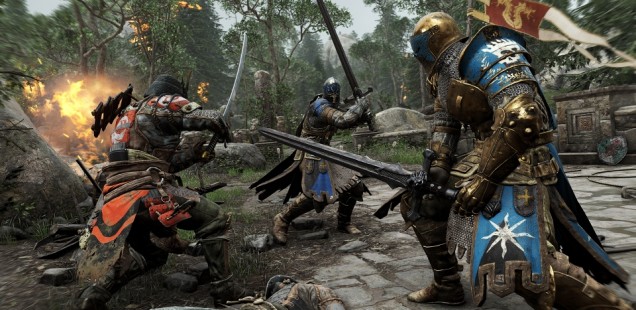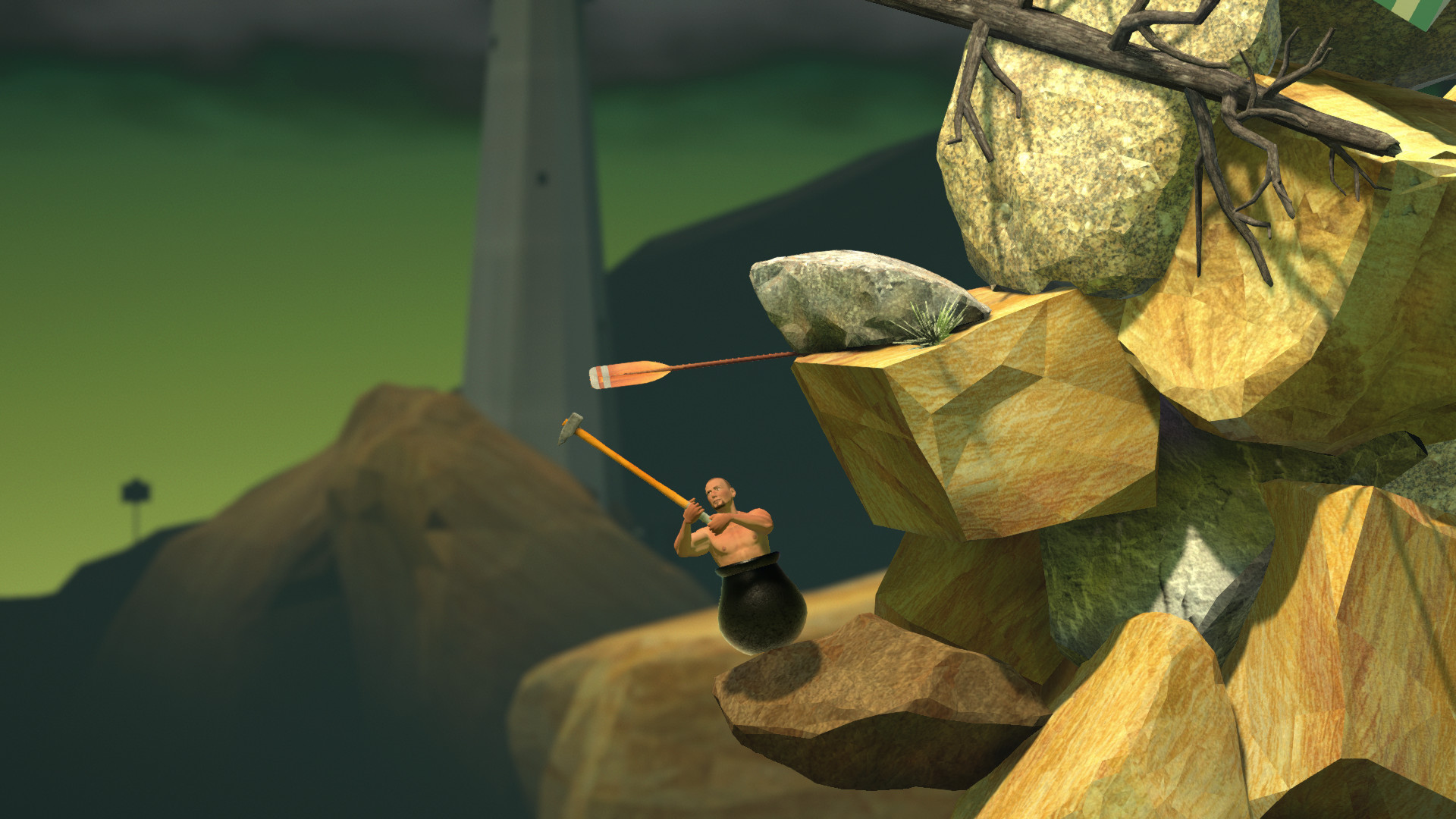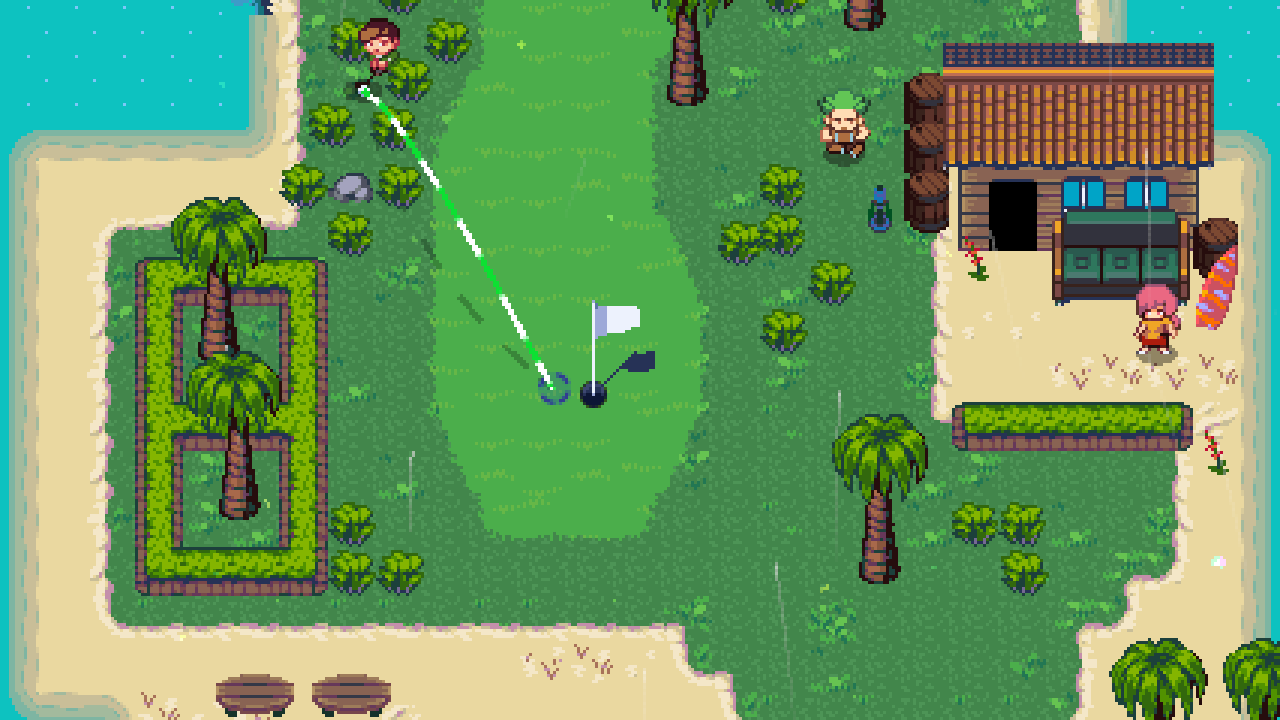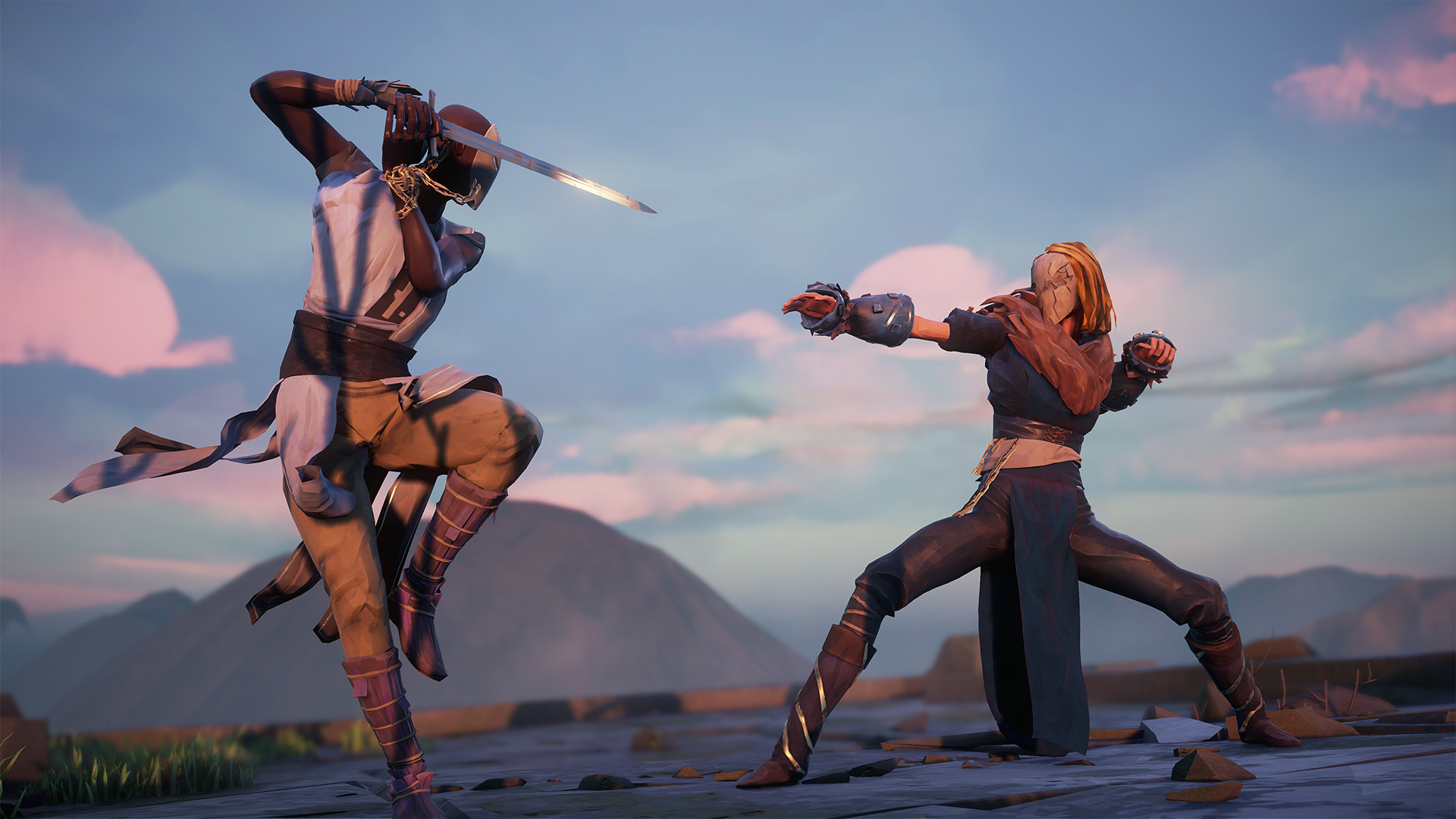
2017: The Year of Flailing
For Honor, Getting Over It, Golf Story, Absolver and ARMS form today’s collection of games about swinging around sticks and/or fists.
For Honor
Jason VandenBerghe is a towering, bearded man who resembles the Vikings in For Honor – the very game he directed. Inspired by his lessons on unarmored fencing with the German Longsword, VandenBerghe wanted to translate this experience into a videogame: the feeling of striking, thrusting and defending against enemies as if you’re wielding the heavy blade itself. By including some of the most badass warring clans in the Middle Ages – the Vikings, Knights and Samurais – and throwing in some amorphous code of honor, For Honor looks like the sort of game live-action role-playing medieval nerds will go weak in the knees for.
True to VandenBerghe’s vision, every slash, hack or jab of your weapon feels incredibly substantial, turning combat into an oddly intimate experience. During the one-on-one rounds, your opponent can swipe from three directions, and you can try to anticipate or react to the attacks by parrying, blocking or dodging them. Unlike typical videogame combat that is or can feel like it’s waged from a distance, battles are shoved right in your face, letting you get up close and personal. By giving you pause and letting you feel the weight of every move, For Honor slows down its pace radically – a far cry from the rapid flurry of punches and attacks we are accustomed to in traditional fighting games.
That may seem like an easier game than most, but it’s actually often exasperating. Here’s where its story mode serves as a drawn-out tutorial for players looking to dip their toes into For Honor. While it’s ridiculously flimsy and even nonsensical at times, it provides everything you need to be familiar with its mechanics. For Honor demands incredible patience, but it’s an experience that deserves to be savored.
Khee Hoon Chan writes for Unwinnable and freelances wherever she can on the internet. She daydreams about being a professional Street Fighter player. Ask her about the weather on Twitter.

Getting Over It
I love hard games, but it’s not because I have something to prove or crave triumph. What I love is when the systems that comprise a game urge me to develop a strict, attentive relationship with them. It creates a deeper bond between me and the game: I can find the same thing with games that are easy, or which don’t emphasize obstacles or competition at all, but it can feel like I’m paradoxically being asked to do more work to properly commune with a game if it won’t meet me halfway by showing that it’s paying attention to me, too – that what I do within the game’s rules is going to matter.
On the other side of the coin, though, hard games can feel a bit opaque, a bit uncommunicative. When you get stuck, that strict attention to your performance often begins to feel like indifference to your suffering. Getting Over It is the opposite of uncommunicative. Bennett Foddy is with you the entire time, philosophizing about difficulty, game design and culture, and urging you not to fret when you fall down – in a tone that feels intended to get under your skin.
The point Benentt Foddy raises in this game is that a good challenge doesn’t have to be so much about the eventual triumph which is so often what we talk about. The feeling of defeat is important, too, and delicious in its own way. For those of us who share Bennett’s tastes, whose lust for challenge he makes so eloquent, this game is about even more than that: it’s about feeling recognized.
Joshua Trevett is a freelancer and the managing editor of Haywire Magazine. He mostly likes art when it’s weird, and that goes double for videogames. His writing can be found in publications like ZEAL and The Arcade Review. For secret reasons, it would be best if you followed him on just two out of these three social media sites: Twitter, YouTube, and his blog.

Golf Story
I tend to hate modern golf games. Much like racing games, the more they try for accuracy and “simulation,” the less interest I have. I do not want to use my controller’s analog sticks to make a perfectly-rendered Rory McIlroy swing his club. I do not want to play an interactive Golf Channel, brought to you live from the Uncanny Valley. I just want to click buttons, maybe tweak my approach, and receive a tiny pixelated trophy for my efforts.
Thankfully, Golf Story gives you several tiny pixelated trophies. Golf Story also uses the tried and true “three-click” system seen in Mario Golf that I seem inexorably drawn to. Golf Story has turtles that help your drives, chill goth kids, and Australian slang that I pretend to understand. Instead of trying to perfectly capture the idea of an exclusive and hallowed golf club, Golf Story ridicules it. Golf Story has memorable characters, a strong sense of humor, and a goofy heart. It even has an entire clone of NES Golf that your character can play within the game. I burned through the game as soon as it came out, and its charm makes me wonder if I should come back for another round.
Christopher Sawula is a digital humanities librarian in Atlanta, Georgia. He occasionally writes about history and memory in video games. You can find him on his blog and on Twitter.

Absolver
Absolver is a game that rewards learning. In it, players create their own custom combat decks from moves that they encounter while exploring the world and fighting NPCs as well as from engaging in skirmishes with other players. The actual combat utilizes only two buttons for attacks and a stance system similar to that of Ubisoft Monreal’s For Honor, but the endless combinations of moves and styles makes it complex, yet rewarding. It’s difficult to briefly describe everything that makes Absolver unique. Everything that it does fits together almost seamlessly: the need to adapt to each opponent, the ability to join fighting schools and learn the styles of other players, the mysterious world, the evolving and surprisingly civil mannerisms of players that have to interact using only emotes and their fists, and most importantly: the need to experience just one more rematch.
An open-world approach to fighting game PvE content might seem bizarre, but the artistic direction made me forget all about those reservations while running around in it. Who your character is, why you are there, and where you are supposed to go is made deliberately opaque and stays that way even after completing most of what the game has to offer. Regardless, the snappy, refreshing combat makes it easy to keep coming back to wander around.
Absolver isn’t perfect. It experienced some server problems at launch, has camera issues in tight places, and the world can be difficult to navigate for those who are more interested in quick completion than exploring. Even with all of that in mind, it’s an unforgettable game for any fighting game fan who is itching for something pulse-pounding and different.
Olivia Dunlap is a game developer finishing up degrees in computer science and English. She is part of LR Games, has a Great Dane named Keanu Reeves, and lives in Little Rock, Arkansas. Follow her on Twitter.

ARMS
Nintendo games are almost always driven by a singular, dynamic idea. The recent Super Mario Odyssey builds on the traditional Mario formula by introducing hat tossing. Splatoon 2 is about slinging and spilling fluorescent ink. And ARMS – Nintendo’s newest venture into fighting games that’s not Super Smash Bros – hosts a colorful roster of pugilists as they combat one another with telephone coil arms.
And boy, that idea is executed so darn well. Not only does it offer a fresh twist to fighting games with the camera positioned behind the fighter – years ago, picturing a fighting game outside of the traditional side-view perspective would have seemed absurd – but it’s also accessible enough to function as a party game. A party game! I’ve been playing Street Fighter since I was 6 and I still can’t get the hang of it.
Plus, the fact that ARMS has managed to pique my curiosity and ignite endless questions stands as a testament to its allure. Where did the extendable arms syndrome that plagues almost every fighter in the game come from? How did folks with these arms collectively decide they should all jump into a nationwide duel? Why does Mechanica possess regular human arms, and Twintelle springy hair? Why is Master Mummy the best dad ever? Without any real resolution, ARMS is desperately in need of a story arc that ties these loose ends together. Failing that, the next best thing is probably the graphic novel adaption which will be coming out later this year.